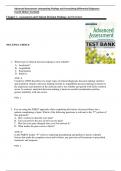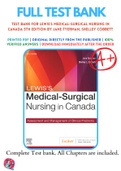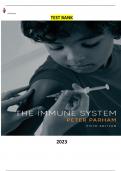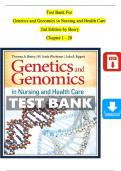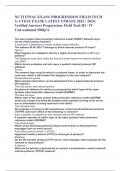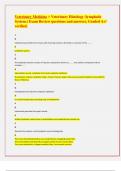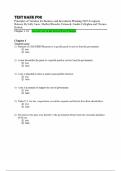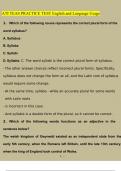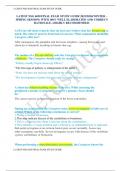Exam (elaborations)
Test Bank For Advanced Assessment Interpreting Findings and Formulating Differential Diagnoses 4th Edition All Chapters | A+ ULITMATE GUIDE
Advanced Assessment Interpreting Findings and Formulating Differential Diagnoses 4th Edition Test Bank . The document is not the original book; it's a handy collection of pre-written exam questions and answers that helps educators gauge students' understanding of the course material. It’s a ...
[Show more]
